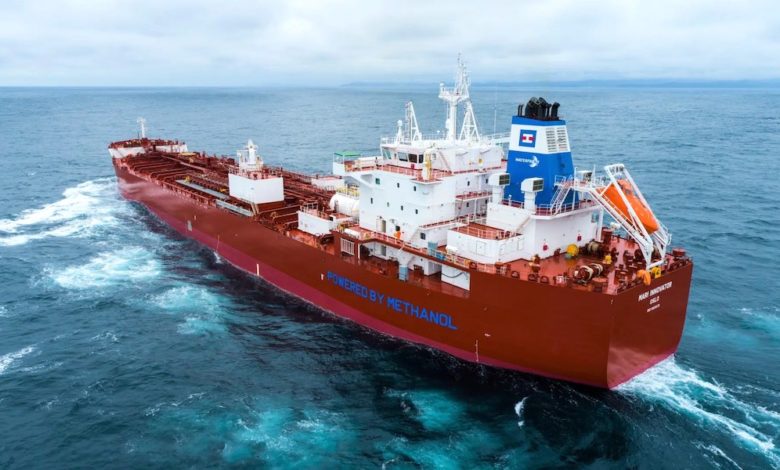The upsides from green fuels

Carl Martin Faannessen, CEO of Manila-based crewing specialist Noatun Maritime, dismisses two of the main arguments circulating about future fuels.
At Maritime CEO Forums we hear much talk about decarbonisation. I am on record here on Splash, saying that the fuels of the future will be green ammonia and e-methanol. That has not changed – if anything I stand by this with even more conviction than last time.
One thing that is changing is the conversation around these. Where the concerns earlier were diffuse, the concerns now are sharper. The two mainstays are: “The new fuels will have more volatile pricing”, and “Shipping will be crowded out by other sectors and can’t compete for these new fuels.”
Both of these are profound misunderstandings, which need to be addressed.
Fossil fuels are subject to highly volatile pricing and it is a pricing and a volatility that shipowners cannot influence. To take an example, 380cst in Singapore was below $185 a tonne on April 1 2020, and on May 1 2022 it exceeded $580 a tonne. That is a 313% increase in just over two years – how is that for volatility?
It is possible to achieve near-perfect price predictability for green ammonia
Shipowners and charterers are price-takers, as the bunker price has an almost perfect correlation with the price of crude oil. This is the market shipping is used to. There are quoted benchmark prices, quality and variety in the commodity being traded, a near-automatic 30-day credit and a large network of parties involved.
How will the price of new fuels be set? Green fuel companies will invest in green fuel projects when there is a bankable commitment from a customer. This is similar to many shipowners’ thinking: You order a ship when you have a long contract to back it up with.
To make this work, the shipowners and the green fuel developer need to sign a long-term agreement which provides a predictable price and a bankable commitment from the shipowner to buy a given volume. This volume and price will allow the banks to recoup their loans and the developer to make a reasonable equity-return. In other words, a shipowner can lock in a much more stable price for fuel than is the case today – without having to resort to hedging. And this agreement ensures delivery of the agreed quantity of fuel to the shipowner; no other industry will come in and take it for a higher price. The agreement is locked down – that is what makes it bankable.
From a shipowner and charterer perspective it is possible to achieve near-perfect price predictability for green ammonia. For e-methanol, the price of biogenic carbon is, as of today, uncertain and this adds a measure of volatility to the price. But this volatility is unlikely to exceed the volatility seen in fossil fuels. Once there is a long-term market for biogenic carbon, this volatility can also be reduced significantly.
Green ammonia and e-methanol are both going to experience a lot less price volatility than fossil fuels.
The contract structures provide the shipowners protection from any other industry wanting to buy the same molecules.
With these green fuels, shipowners get less price volatility plus assurance of supplies. As a bonus they get a fuel that is identical from place to place, allowing for direct mixing. Less hedging, less time and money spent on testing and segregating fuels, and full predictability in fuel-pricing. What’s not to like?
